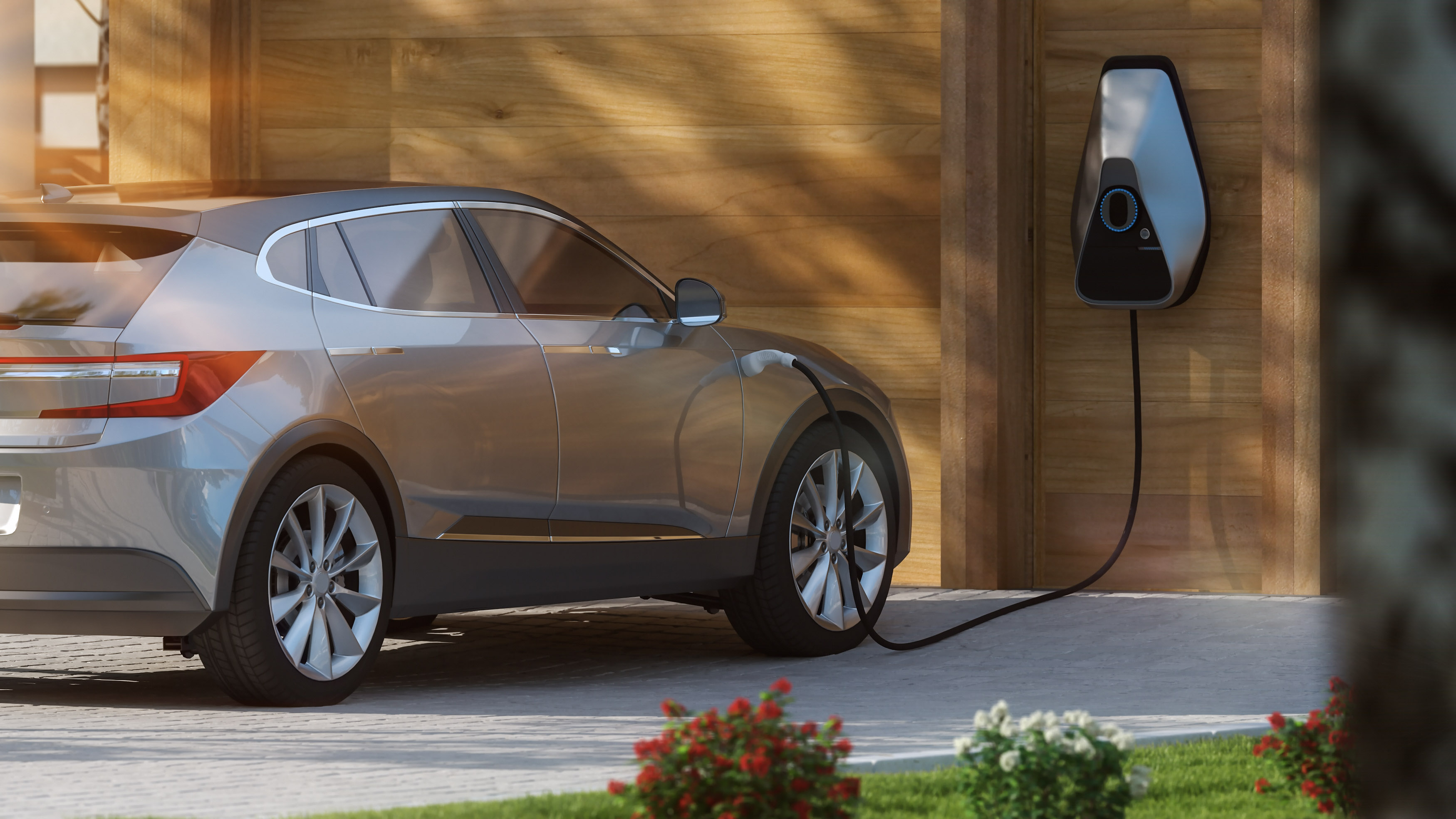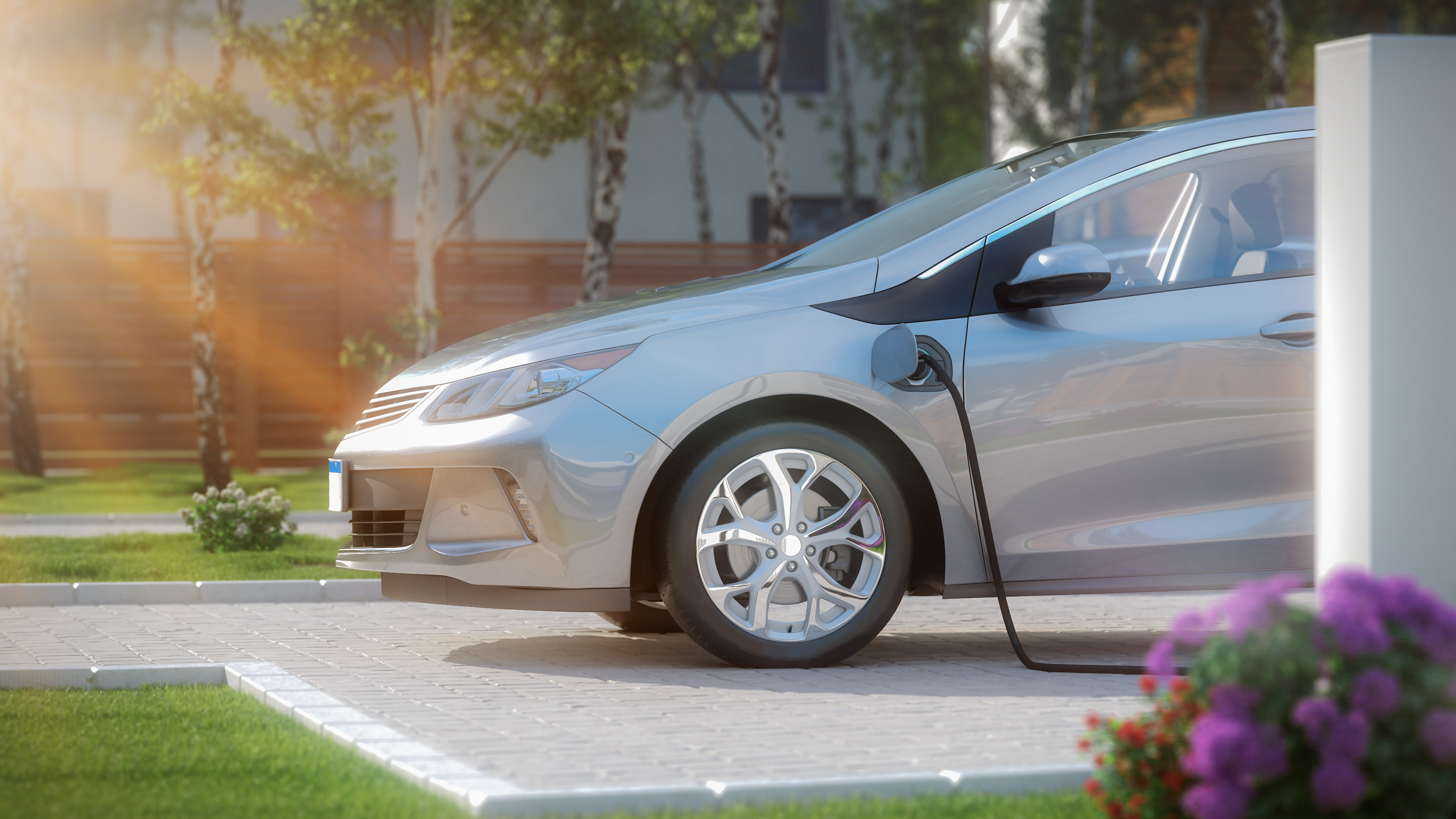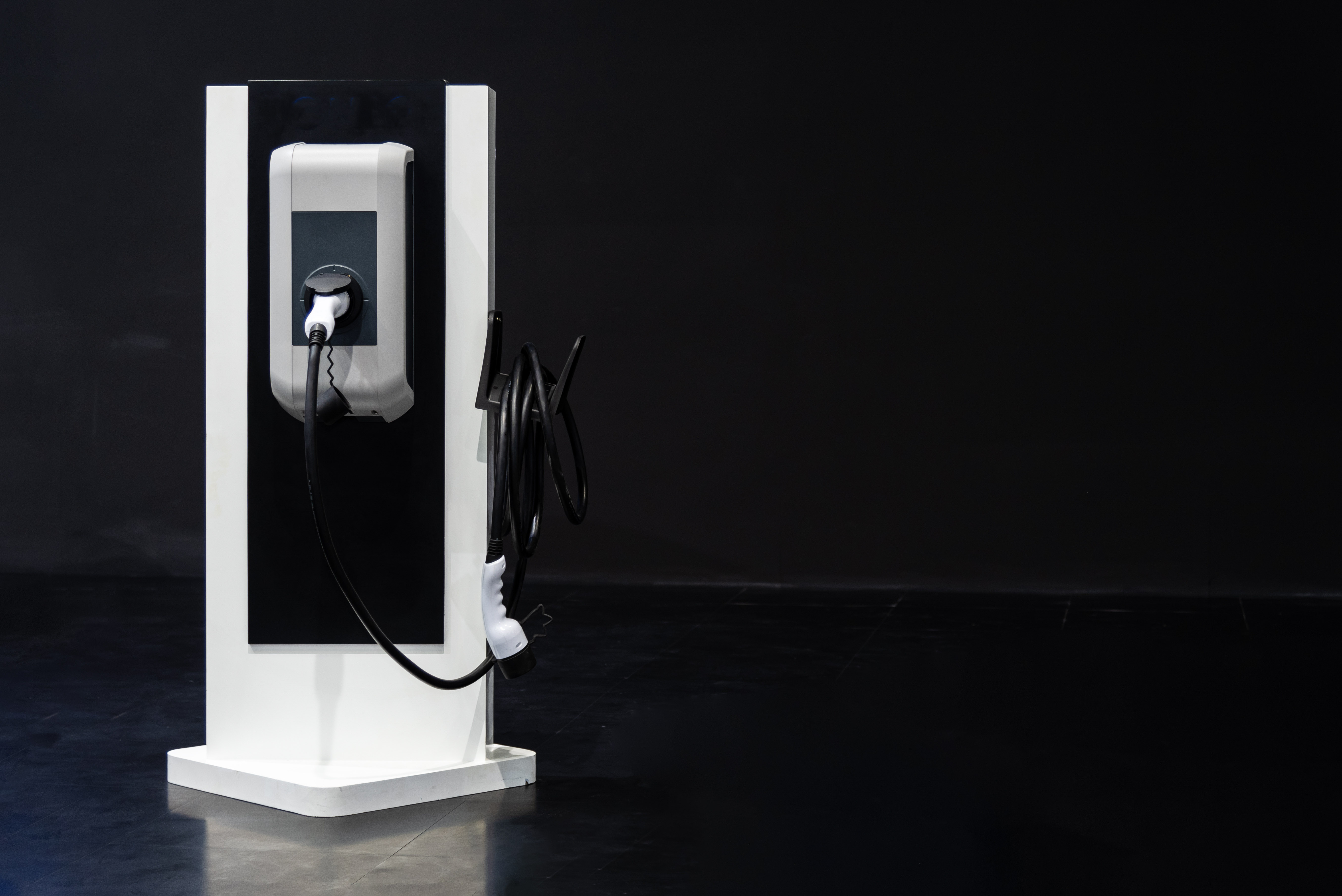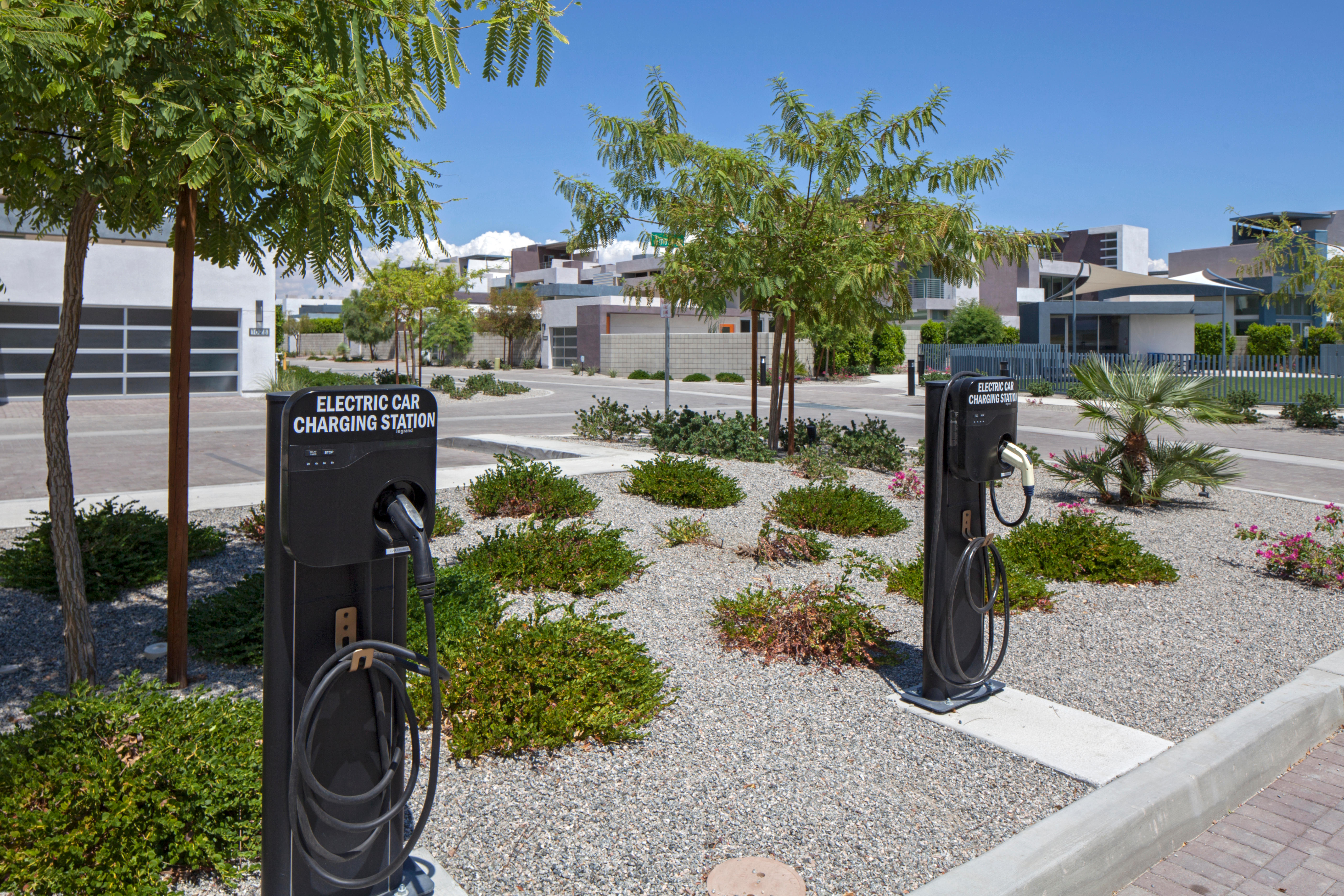Electric car charging at home - how to make sure your house is EV Car ready
Everything you need to know about electric car charging at home, from the port to the power and all the details in between

Electric car charging at home is a growing topic of conversation here at Livingetc. With sales in EV cars starting to boom in both the US and Europe, the requirements for how our homes must function is changing. Drivers are gravitating towards everything from the humble Nissan Leaf to the flashy Tesla model S in record numbers. But what does this mean for the way we need to design our houses?
As well as helping the climate and gaining long-term savings costs, opting for an electric car means you will never have to deal with gasoline or an oil change ever again. But this shift also likely requires that you work out how you will charge your car at home.
More than 80% of electric vehicle (or EV) charging happens at home, according to the US Department of Energy. Fortunately, recharging options for drivers have come a long way from when you would be left spending almost a whole day waiting for your battery to be charged. Today, the process can be relatively fast and pain-free.
Electric car charging at home - the basics

1. The EV cable
Your new EV will almost certainly come with a cable, around 20ft in length. Longer variants are available, and they will be able to plug straight into a standard household socket. At one end will be the pistol grip-style connector that plugs into the car.
The simplicity of this arrangement comes with a catch – while a standard 120 volt outlet is fine for your lamp or microwave, it’s extremely slow when it comes to the charging of your car. Known as level 1, or “trickle”, charging, this arrangement will provide just three to five miles of range to your car battery each hour. Which means you could be spending more than a full day recharging an empty battery.
2. Level 2 Charging
Because a cable can be slow, many EV owners opt for what’s known as level 2 charging. This requires a 240 volt outlet, the sort you’d need for an appliance with the heft of an electric clothes dryer or oven. With this sort of charging, you can expect 25 to 30 miles of range to be added to your battery each hour when plugged in.
“If you have a plug that can accommodate 240 volts, you can just plug in and away you go,” says Ronald Montoya, senior consumer advice editor at Edmunds, an automotive information site. “If you don’t have that you will need to rewire your power outlets either in your garage or driveway. Also, most manufacturers recommend not using extension cables that don’t match the voltage, as it can be dangerous.”
3. DC Chargers

There are even faster chargers, called DC chargers, that can boost your car’s battery to be up to 80% full in as little as 15 minutes. But this is industrial-level equipment normally used in commercial settings and therefore prohibitively expensive for home use. So the choice is really between level 1 (cable) and level 2 charging.
4. Position your home charger perfectly

Your home may not have the electrical capacity for a level 2 charger, so it is worth consulting a qualified electrician to see if they can upgrade your circuit board to allow you to plug your car in. Ideally you want a plug that isn’t too far from where you park your car, so you don’t have to stretch the cable where it becomes a nuisance or hazard. Make sure you like where the plug-in point is positioned before you install it.
Many people use a simple wall socket in their garage or install one in their driveway. You may want to opt for a ‘charging station’ – a bracket that hangs on the wall that you can coil the charging cable around and includes a screen that shows you how long you have left to charge and other data, such as how much carbon emissions you’ve avoided.
5. Monitor your charger
Many of EV car charging stations come with the option of viewing this data through an app on your phone, which allows you to remotely schedule when you want your car to charge. Savvy drivers often opt to do this in cheaper off-peak times, late at night or early in the morning. If you are charging in the driveway, you can get special charging stations that are resilient to various weather conditions.
Most of these features will suit any EV you have although some brands, such as Tesla, have their own unique charging systems that only work with their cars. The energy demand of some newer, larger EVs also require their own solutions – the new electric Ford F-150, for example, would take some time to charge to its 300-mile range with a standard level 2 charger. So the company has its own wall-mounted charging station that allows 80 amps to flow into the hulking vehicle, about double what the standard level 2 would provide.
6. Charge your car cheaply

“If you have a 240 volt charger and can plug in and go at home, that’s the best experience as an EV driver,” said Joe Britton, executive director of Zeta, an EV industry body. “Ideally, you won’t even think about it. You will plug in, schedule your car to charge at midnight where the utility may offer an off-peak discount of up to a third off, and your car will be ready to go in the morning.”
How long does it take for a car to charge?
Your car model, and charging set-up will influence how long it takes for you to recharge your battery. But a level 2 charger should, generally speaking, fill up a nearly empty battery within six to eight hours.
Given that Americans, on average, only drive around 30 miles a day on average, most of the time overnight recharges will involve a short top up rather than a full replenishment. The final stages of charging will take a little longer, as batteries charge up most quickly when empty before slowing down at the end to avoid damage to the cell.
“Unfortunately we aren’t there yet with charge times of five minutes like you’d get with putting gas in your car,” said Montoya. “But keep in mind most of the time you are just topping up and a key difference is that the ‘gas station’ is at your house. If you are charging overnight you won’t even notice it.”
Hoe much does it cost to set up electric car charging at home?
Getting a new 240 volt panel at home could cost around $500, fully installed, while charging stations can range from $500 up to $2,000, with the labor costs adding several hundred, or even a few thousand, dollars depending on location and amount of work required.
The cost of charging will, again, depend upon your location and the time of day you are recharging (peak hours from 4pm to 9pm are usually the priciest), but in almost every instance plugging your RV in at home is cheaper than if you had to pay for gasoline or use public charging infrastructure, which often involves having to have a membership of a certain supplier and the payment of premium rates.
According to the US Department of Energy, if you pay $0.13c per kilowatt-hour for your electricity, which is close to the American average, you will pay around $9 to fully charge an EV with a 200-mile range. You have to pay for a charger, and in many cases a more expensive car than a traditional gasoline or diesel alternative, but overall EV drivers usually come out ahead on costs in the long run.
“The payback is not in 20 years, it begins as soon as you light up the system,” said Tracy Price, Founder and CEO of Qmerit, an EV charger installation company based in California.

Can you charge a car at home if you don't have a driveway?
Nearly a fifth of Americans live in an apartment or condo, a living situation that usually rules out having your own driveway or garage. For people who rent, in particular, it is difficult to install the equipment you need to charge an EV.
“I live in a condo, there are no chargers and while I’d love an electric car it would require a whole conversation about who pays for that,” said Ronald Montoya, senior consumer advice editor at Edmunds. “If you can’t charge at home you have to rely on public infrastructure, which is a lot more difficult.”
There are only around 45,000 publicly-available EV chargers in the US, which are split between several different providers that each require memberships (Tesla has its own network). Joe Biden’s administration has set a goal for 500,000 new EV chargers across the country to help remedy a situation where some places, such as California, have plenty of chargers while states in the midwest and south are charging deserts.
The situation is slowly changing, however. Growing demand for EVs is putting pressure on landlords to cordon off certain spots in basement garages and parking lots for tenants who demand them as an amenity. And businesses, too, are realizing that more and more customers are arriving to them powered by battery, rather than gasoline, cars.
“There is going to be a bias towards that store or coffee shop that offers chargers,” says Joe Britton. “It’s the same with residential buildings – the cost of putting in a couple of level 2 chargers isn’t extraordinary and that will put a premium on properties.
“We will see more and more in response to demand. The future will have you charging where you are and when it’s convenient to you, not having to go out and search like you do for a gas station.”
Be The First To Know
The Livingetc newsletters are your inside source for what’s shaping interiors now - and what’s next. Discover trend forecasts, smart style ideas, and curated shopping inspiration that brings design to life. Subscribe today and stay ahead of the curve.
Oliver Milman is the environment correspondent at Guardian US and is based in New York City. He previously worked for the Guardian in Australia, and prior to this has been staff at various magazines and websites in the UK. He has a book out this year on the dangerous decline of insects around the world, enjoys cooking and occasionally playing the ukulele.
-
 Turns Out the Coolest New Café is Actually In Your Kitchen — Here's How to Steal the Style of TikTok's Latest Trend
Turns Out the Coolest New Café is Actually In Your Kitchen — Here's How to Steal the Style of TikTok's Latest TrendGoodbye, over-priced lattes. Hello, home-brewed coffee with friends. TikTok's 'Home Cafe' trend brings stylish cafe culture into the comfort of your own home
By Devin Toolen Published
-
 5 Bathroom Layouts That Look Dated in 2025 — Plus the Alternatives Designers Use Instead for a More Contemporary Space
5 Bathroom Layouts That Look Dated in 2025 — Plus the Alternatives Designers Use Instead for a More Contemporary SpaceFor a bathroom that feels in line with the times, avoid these layouts and be more intentional with the placement and positioning of your features and fixtures
By Lilith Hudson Published